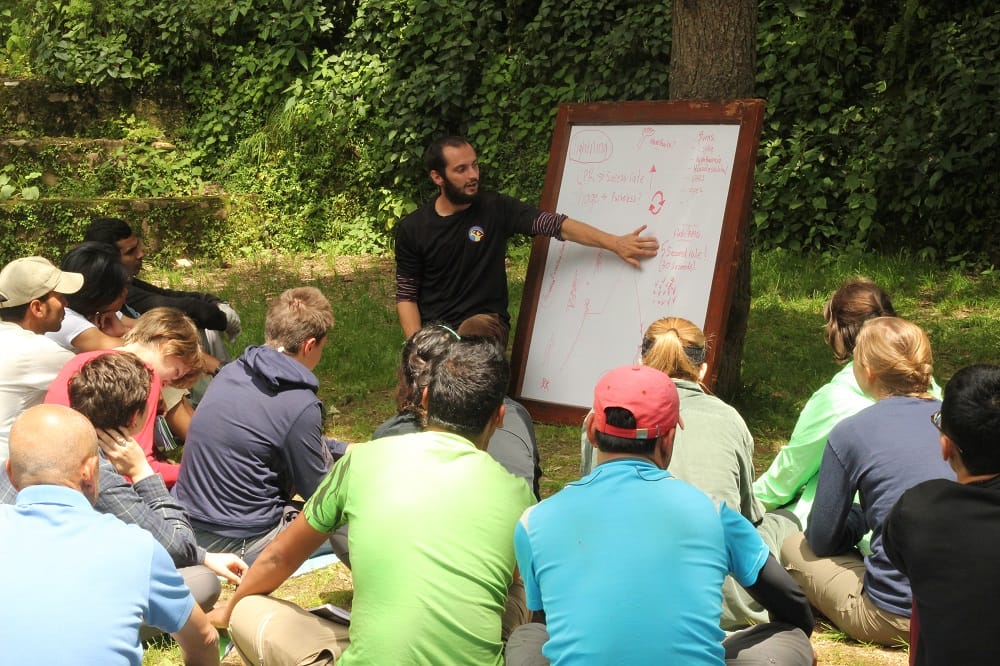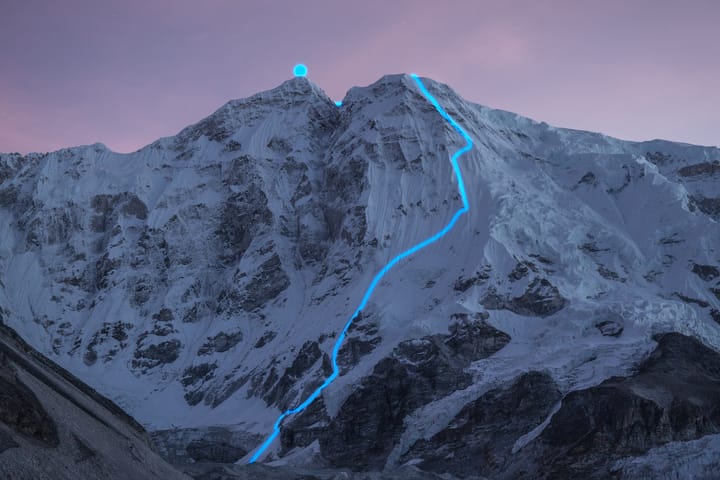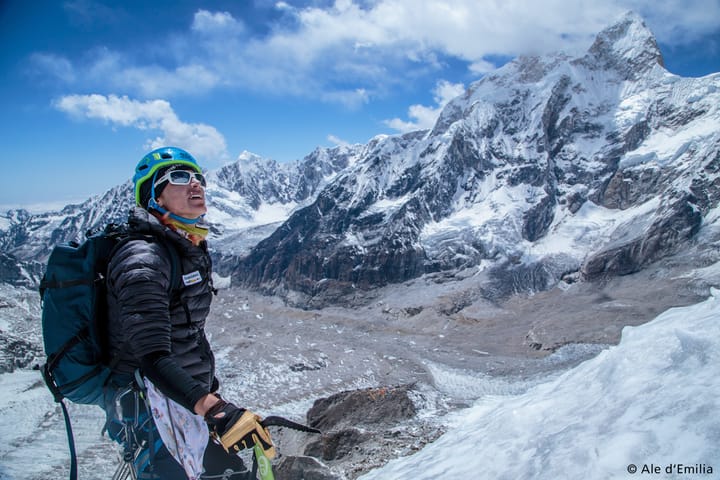Wilderness First Aid: A newbie's account

An outdoor enthusiast goes on her first basic Wilderness First Aid course, and learns how to act in an emergency.
You’re out in the backcountry, somewhere deep in a bugyal, (alpine meadow) about 5000m above sea level on a Himalayan peak. Blue sky, white clouds, snowcapped peaks and acres of green around you. While you float about in the beauty, your friend stops and starts heaving. Collapsing to the ground, hands on head, hurting and feeling weak. Eyes begin to water and the heaving won’t stop. All this happens within two minutes.
What do you do?
It’s a scary situation, but not uncommon, especially in high altitude. The friend suffered from a form of acute mountain sickness. When confronted with such a situation, it is tough to think straight.
While we aren’t doctors or paramedics, there are some basic things that we can learn to prevent getting ourselves and others into unnecessary danger.
Wilderness, in medical terms, refers to any place that is more than an hour away from advance medical care. Whether you're in an obscure by-lane of Old Delhi or deep in the jungles of Amazon, if a friend fractures their foot and you're at least an hour away from medical care, you’re in wilderness.
The Wilderness Medicine Society is a 28-year old American academy where doctors and paramedics come together to provide advice and guidance to medical personnel working in wilderness and back country environment. They create curriculum for wilderness medicine education with various certifications. One of those is wilderness first aid course, designed to give a basic understanding of first aid, a stop gap till doctors and paramedics arrive.
Keeping simple things simple
Aerie Backcountry Medicine is a 20-year old institute based in Missoula, Montana. A member of the Wilderness Medicine Society, it provides wilderness and rural medical training to students across the globe.
Determining Level of Responsiveness (LOR)
Protect the Spine
A - Assess Airway
B- Assess Breathing
C- Assess Circulation
D - Assess Neurologic Deficit
E - Protect the patient from the Environment
Head/Face
Cervical Spine (C-Spine)
Neck/Throat
Clavicles
Chest
Abdomen
Pelvis
Legs/Feet
Arms/Hands
Spine
Early September this year, Aerie Backcountry Medicine conducted a two and a half day course in in collaboration with and at the Hanifl Centre, an outdoor outreach of Woodstock school in Landour, Mussoorie, in north India.
There were 32 of us, an eclectic mix of students of anthropology, adventure tour guides, and outdoor enthusiasts. For some, the course was an essential part of the their work, their life and for some like me, a chance to experience something new, satiate a curiosity, write a story.
David McEvoy, director of Aerie Backcountry Medicine and one of the chief instructors told us on the first day of the workshop, “You can always prevent a preventable death, and keep simple things simple.”
“Just remember that there is a lot of information out there but there are two main themes – prevent people from dying the preventable deaths. If you can fix it you should fix it and you shouldn’t miss it. Keep simple things simple. Most of what happens to you starts very simple. You get a cut and then it gets infected. You don’t treat your water, you don't pay attention to what your dog's doing. Just clean that wound out. Keep simple things simple, and prevent them from turning into big problems. And not overthinking and over diagnosing, but preventing problems from getting more serious. We teach classes to physicians sometimes, and a lot of times the students who come out of a two day class will make better decisions. They are not thinking about medication, they are thinking about how can I treat this better.”
S - Signs and Symptoms
A - Allergies
M - Medications
P - Past Pertinent Medical History
L- Last Oral Intake and Output
E - Events Leading up to this Problem
Level of Responsiveness (LoR)
Heart Rate
Respiratory Rate
Skin
Pupils
The workshop was a nice mix of very little classroom teaching and lot of scenario based improvisations. Our instructors David from Aerie Backcountry and Akshay Shah along with Andrew from the Hanifl Centre literally taught the ABCDE of first aid. The course comprised of patient assessment which includes primary and secondary survey, patient history, patient management, treating traumatic emergencies, environmental emergencies and CPR in a way that stays with you.
There were lectures in the classroom, and there were lectures outside in an open space. The open space lectures included our instructors getting bloody wounds and falling unconscious and showing us how to tackle the situation. This also included learning how to carry patients in a body bag and on piggy back, how to deal when lightning strikes, how to make an effective splint from a sleeping bag and mattress and strings.
And then there were scenarios, tons of them. For the scenarios, we were divided into groups of three and were given situations to tackle.
I had my group mates come to me with snake bites, bee stings, lightning strike, hypothermia, diarrhea, AMS, dehydration and any other thing imaginable. It was a great practice in improvisation. Tessa was a convincing patient. I almost panicked every time.
For 21 yr-old anthropology student Tessa Samuelson, "The best was to learn the things, to know things I didn’t know. To be helpful and not be a bystander."
"Hopefully I wont have to use it. But if I do, it doesn’t seem like the skills are just for wilderness. Not just trekking, but also if someone at home has a heart attack or a stroke, I can use the skills I learnt here." she said.
"I do think I'm going to forget the little details, but what will stick with me is the ABCDE."
[gallery type="rectangular" ids="4656,4657,4658,4659,4660,4661,4662"]
For 38-year old wildlife instructor Suniti Bhushan this was a good way for him to recap the things he had learned. “I know all about wounds and bites and problems. It is good to be put into situations.”
My biggest worry was panic. It is all very well to simulate situations, to make it as realistic as possible. But at the end of the day, it is still just a simulation. What am I going to do if someone struck by a severe ailment comes to me? What if the patient is irritable, or hyper? Wouldn't I instinctively focus on what the patient says and wants? Wouldn't I get distracted?
"Its hard!" David told me.
"This is everybody learning, we are all always learning what you are talking about and its very easy to get drawn into drama when the patient is attracting you to. So we try to do the basic principles that we discuss and that’s why, no matter what you say we see, we try to force you in a certain way, which is by assessing the scene, not getting distracted which is by doing this again and again and again. When you do it repeatedly, you make it more likely that you follow the path and less likely that you get distracted. We want you to go through the same process. My scene survey, my assessment. And that way you don’t miss things, you don’t get distracted. And its like anything. You want to gain good habits, so that when it comes to making decisions you will make sensible ones.
You will make mistakes, and you will get distracted. I make very bad mistakes sometimes, its a never ending learning curve. Keep the practice on, it builds muscle memory and makes you a thorough individual."
Essentially, it's your presence of mind that matters most. If ever a situation arises where you come across a person lying on the ground, do not panic. Take a deep breath, look around you, assess the environment, go to the patient, tap them, speak to them loud and clear. No response, call emergency straightaway. While you wait for the docs to arrive, check the ABCDE. If something wrong there, STOP and fix it. Next do the secondary survey, vital signs. Keep talking to the patient. Do not leave his side till the docs arrive.
After a successful course here at the Hanifl, the course is going to go to several places in India, including Indo-Tibetan Border Police academy in Mussoorie, the concrete jungle of New Delhi, and the rural areas Of Uttarakhand.
To know more about the course and how you can participate, email info@haniflcentre.in
All information in the boxes has been taken from the 12th edition of Wilderness Medicine, a handbook provided by Aerie Backcountry Medicine.
Images © Hanifl Centre





Comments ()